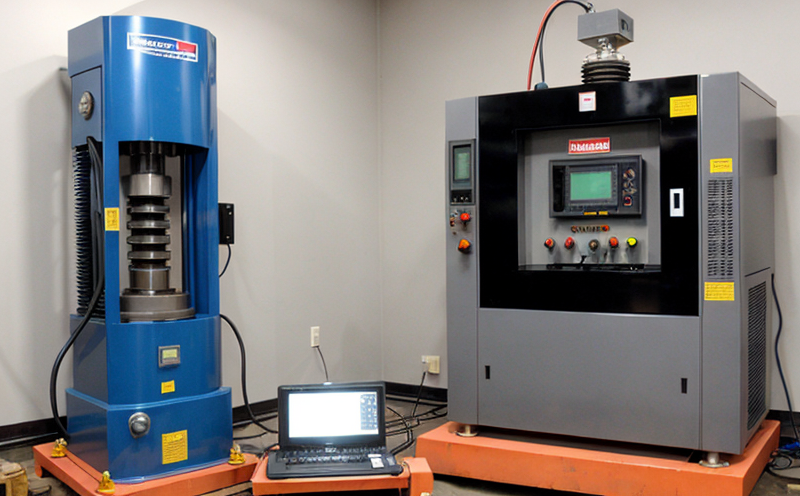Mechanical Shock & Vibration Testing
Testing electronics subjected to mechanical shock and vibration is essential in ensuring that devices can withstand the harsh conditions they are likely to encounter during transport, use, or storage. This form of testing is crucial for quality managers, compliance officers, R&D engineers, and procurement professionals who aim to ensure product reliability and safety.
Electronics subjected to mechanical shock and vibration can face significant challenges in their operational environment. Shock events may range from the sudden jolts during transport via air or sea freight to the continuous vibrations encountered in industrial settings such as manufacturing plants or data centers. These environmental stresses can cause failure, reduced performance, and even permanent damage to electronic components.
Shock testing typically involves subjecting a specimen to controlled impacts using drop testers, pendulum machines, or linear motion shakers. Vibration testing exposes specimens to sinusoidal or random vibration at specific frequencies over defined durations. Both tests are conducted according to international standards such as ISO 10854:2007 and ISO 12219-1:2010. The tests aim to replicate real-world conditions and ensure that devices can perform reliably under stress.
The process of mechanical shock and vibration testing involves several key steps:
- Specimen preparation: Carefully preparing the specimen for testing, ensuring it is representative of the actual product. This may include encapsulation or mounting in a holder to simulate real-world conditions.
- Test setup: Configuring test equipment according to international standards and specifications. This includes selecting appropriate shock and vibration levels and durations.
- Data collection: Recording detailed data during the testing process, including force measurements, displacement, and frequency response.
- Analysis: Analyzing collected data to assess compliance with specified acceptance criteria. This step often involves statistical analysis to determine if the specimen has met required performance thresholds.
The results of mechanical shock and vibration testing are critical for quality managers in ensuring that products meet stringent reliability standards. Compliance officers can use these test results to ensure adherence to regulatory requirements, while R&D engineers rely on them to identify potential design flaws or areas for improvement. For procurement professionals, this testing ensures that the components they source are capable of withstanding the rigorous conditions they will encounter.
Eurolab Advantages
The expertise and resources at Eurolab ensure that our clients receive accurate, reliable testing results. Our state-of-the-art facilities are equipped with the latest technology to perform mechanical shock and vibration tests under controlled conditions.
- Accurate Testing: Using high-precision test equipment ensures that each specimen is subjected to consistent and repeatable stress levels.
- Comprehensive Reporting: Eurolab provides detailed reports with all relevant data, facilitating easy interpretation by technical experts.
- Expertise in Standards: Our team of engineers has extensive experience with international standards such as ISO 10854:2007 and ISO 12219-1:2010. This ensures that our testing is both rigorous and compliant with industry best practices.
- Custom Solutions: We offer tailored testing solutions to meet the specific needs of each client, ensuring that every test scenario reflects real-world conditions accurately.
Our commitment to excellence means that we not only deliver accurate results but also provide valuable insights into potential areas for improvement. This comprehensive approach ensures that our clients are well-equipped to make informed decisions about their products and processes.
Competitive Advantage and Market Impact
Mechanical shock and vibration testing plays a pivotal role in enhancing the competitive advantage of electronic devices. By ensuring that products can withstand the rigors of transport, use, and storage, companies can build trust with their customers and differentiate themselves from competitors.
For quality managers, this means higher product reliability translates to fewer warranty claims and increased customer satisfaction. Compliance officers benefit by avoiding potential regulatory issues and fines associated with non-compliance. R&D engineers gain valuable insights into design improvements that enhance durability and performance. For procurement professionals, reliable components translate directly into reduced costs and improved supply chain efficiency.
The market impact of robust shock and vibration testing is significant. Products that pass these tests are more likely to succeed in competitive markets where reliability is a key differentiator. In industries such as aerospace, automotive, and consumer electronics, the ability to withstand mechanical stress can mean the difference between success and failure.
Use Cases and Application Examples
| Industry | Product Type | Testing Scenario | Test Parameters |
|---|---|---|---|
| Aerospace | Avionics | Transportation and Launch | Drop Test: 50g, Vibration: 10-200 Hz, 3 axes |
| Automotive | Onboard Electronics | Road Vibration | Vibration: 40-60 Hz, Random, ±5 g peak-to-peak |
| Military | Communication Equipment | Field Deployment | Shock Test: 150g, Vibration: 20-350 Hz, 6 axes |
| Consumer Electronics | Smartphones | Packaging and Handling | Drop Test: 8g, Vibration: 40-120 Hz, 3 axes |
- Aerospace: In the aerospace sector, avionics must endure extreme shock events during launch and transportation. Drop tests simulate these impacts, while vibration testing ensures that components remain functional under continuous oscillations.
- Automotive: Automotive electronics are exposed to road vibrations during use. Vibration testing helps identify potential failure points in on-board systems like infotainment or navigation devices.
- Military: Communication equipment used in the field must withstand harsh environmental conditions, including shock and vibration from rough terrain. These tests ensure that critical military electronics remain operational under all conditions.
- Consumer Electronics: In consumer electronics, such as smartphones, packaging and handling can subject devices to significant shocks. Testing during these stages ensures that products are robust enough for daily use.





